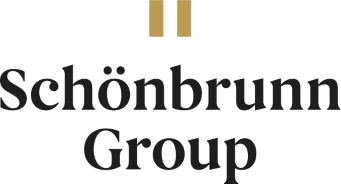SKB 003022_Deckenfresko

The fresco painting is like the frescoes in the Great Gallery once more a glorification of the House Habsburg's perpetually wise and benevolent rule, and here Guglielmi largely keeps to the courtly Baroque allegorical tradition, in contrast to the paintings in the Great Gallerie, which are more realistic and lifelike. At the centre Aeternitas, wreathed in garlands of flowers and wearing the nimbus of eternity, holds a archducal coronet over a white crane, which is held by Chronos. At her feet Mars the god of war strides out, dominating the centre of the painting. The she-wolf with her twin cubs lies sheltered by his cloak, flanked by the S.P.Q.R. standard, a further allusion to the Roman origins of the empire. On the right of the short side a winged genius shows the philosophers' stone to an old, laurel-wreathed man. The old man's attributes - the imperial crown, sceptre, imperial orb, flag and Golden Fleece, identify him as the personification of the Holy Roman Empire. While this image alludes to Maria Theresa's benevolence and fairness. Clementia, as the personification of clemency, with flames on her forehead, tries to hold back the fugitive spirit of penal law while at the same time pointing to a tablet which says: Regnum me comite (eri)t (iust)um; opposite her Justitia with her attributes of scales and sword. Abundantia with cornucopia and grapes on the long side of the fresco is an allusion of the prosperity of the empire whose fame is personified on the opposite side by Fama with her trumpet.
Die Glorifizierung des Hauses Habsburg-Lothringen. Deckenfresko in der Kleinen Galerie von Schloss Schönbrunn, Gregorio Guglielmi, 1759. © Schloss Schönbrunn Kultur- und Betriebsges.m.b.H. / Fotograf: Alexander Eugen Koller
